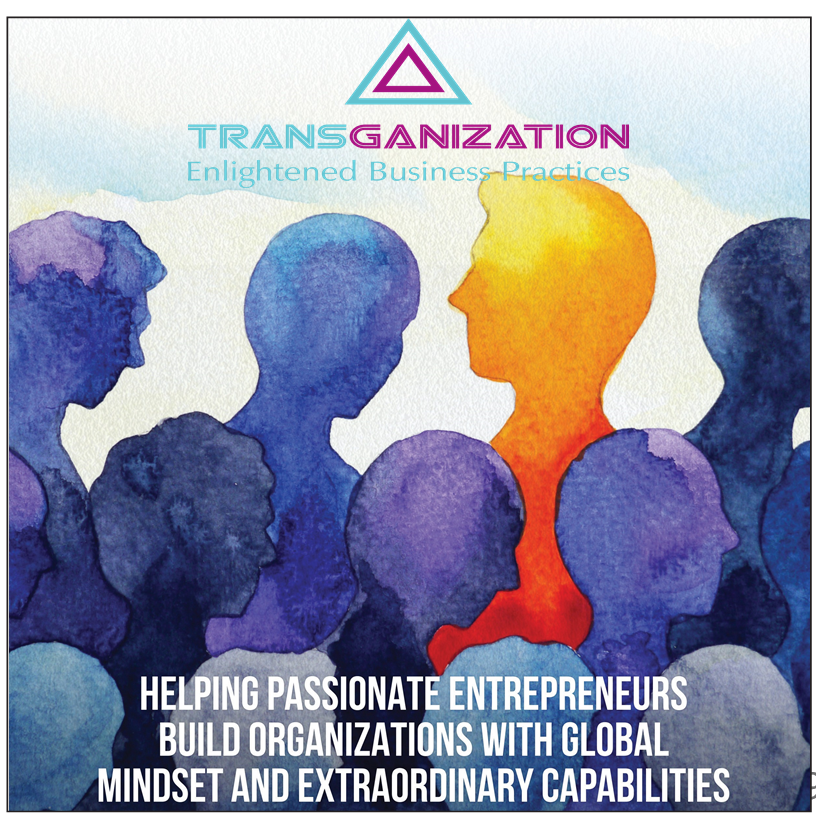EXPONENTIAL ORGANISATIONS
Johannes Gutenberg invented the printing press in the 15th century, which revolutionised access to knowledge and the ability to share ideas. This invention is known as the Gutenberg Moment. Today, we are experiencing several Gutenberg Moments simultaneously, driven by exponential technologies such as computing, telecommunications, artificial intelligence, 3D printing, drones, genetics and robotics. The World Economic Forum has called this period the Fourth Industrial Revolution, as digital technologies are changing at an unprecedented pace.
The way we do business is changing more dramatically than it has been in the past hundred years. The future belongs to a new type of Exponential Organisation - one that can keep up. No wonder, CEOs around the world are struggling to figure out how to transform their traditional business models into exponential business models that can leverage new technologies.
In this article, we shall try to understand the meaning and benefits of being an exponential organisation.
Technology Creating New Opportunities
The world is changing rapidly, driven by exponential technologies and globalisation. This is making it more open and transparent and we are moving from a world of scarcity to a world of abundance. However, most organisations are still linear, hierarchical and centralised.
They were world they are still designed for a time when resources were scarce and information was less accessible. However, in today’s world, we have access to more information and resources than ever before. This means that we need to rethink the way our organisations are structured and operated.
In other words, we are living in a time of unprecedented technological and social change, which is creating new opportunities for businesses; and exponential organisations are those that can take advantage of these changes and grow rapidly.
Power of Proactive Urgency
The power of proactive urgency is required in preventing the ultimate emergency like insolvency. Businesses often encounter situations that are born either out of urgency or emergency.
Addressing situations promptly often proves instrumental in preventing their escalation into full-fledged emergencies. Proactive and efficient management of urgent matters not only helps mitigate risks and minimise potential damages but also contributes to the overall resilience of the business.


At times, challenges stem from macro- environmental forces such as political, economic, social, technological, legal and environmental factors. If these situations are detected and addressed, they are less likely to evolve into emergencies (facing bankruptcy or insolvency) necessitating drastic measures such as cost- cutting, budgetary revisions and even exploration of new revenue streams.
Reflecting on the past, leadership may realise that neglecting or leaving early signs of financial instability and cash flow challenges unattended had almost certainly led to reactionary measures when faced with imminent bankruptcy or insolvency.
Similarly, overlooking clear indicators of shifting market preferences or the emergence of new generations of customers with distinct needs demands immediate attention.
Disregarding these urgent imperatives will inevitably lead to obsolescence in the foreseeable future. In such a bleak scenario, a business rendered irrelevant will be left with limited options, which may include failed products and a continuing decline in both sales and market share.
Companies frequently witness disruptive forces impacting their industry and often allocate substantial resources to enter emerging markets. Their downfall typically stems from an inability to fully embrace the novel and emerging business models presented by these disruptive changes. Kodak – the renowned film company — had
eventually ventured into digital cameras, invested in the technology and even grasped the idea that photos would be shared online. However, their misstep was in failing to recognise that online photo sharing was the new business itself, not merely an extension of the printing business.
For companies such as Kodak, the concept of metamorphosis becomes crucial. Businesses must undergo a fundamental transformation in time as the conventional ways in which they have operated will no longer suffice. This metamorphosis is, however, not a single leap but a step-by-step process, signifying a deliberate and structured journey. Businesses need to evolve into entities that align with the contemporary needs of society to stay relevant and responsive to the demands of the evolving world.
The Rise of Exponential Organisations
In the fast-paced world of business, a new phenomenon is reshaping the landscape — the rise of exponential organisations. These entities, exemplified by industry giants like Google and Facebook, are not just businesses; they are powerful agents of change, scaling at a pace
10 times faster than traditional organisational structures. The question arises: what sets them apart and how can other businesses harness the same transformative force?
Studies reveal that the key lies in a phenomenon - what is called a massive transformational purpose (MTP). Unlike a conventional mission statement, an MTP is a beacon guiding organisations towards a globally impactful goal. It is not merely a tagline; it is a rallying cry that goes beyond profit-making.
An MTP can help organisations make the leap from mediocrity to greatness. The founders of Google and Facebook started with a vision that transcended the ordinary, a purpose that would address global challenges. This purpose propelled them to create innovations that disrupted industries and changed the way we live and interact. An MTP transforms an organisation into a dynamic learning environment, sparking constant innovation and positioning it at the forefront of research and technology.

Take, for instance, Boston Children’s Hospital. Their MTP, “Until Every Child Is Well,” is more than a statement on a wall; it’s a profound commitment that places children at the core of their existence. This purpose resonates deeply, attracting individuals from donors to top-tier talent who are passionately dedicated to the cause.
Finding or creating your MTP is a three-step process
- Define the “why” of your organisation. What problem are you trying to solve? This clarity is the foundation of any transformative purpose.
- Visualize the “how” of your organisation. How will you solve the problem and transform yourself in pursuit of your massive purpose? This step requires imaginative thinking and breaking away from conventional approaches.
Aim for a global solution. Even if you are currently local, your MTP should address the largest possible audience to amplify its impact.
The magic of an MTP lies in its ability to inspire. It compels individuals to think beyond existing models, fostering a mindset of continuous improvement. It’s about creating an emotional connection that reaches the hearts and minds of everyone involved. An MTP is credible and clear and guides the organisation toward its transformative journey.
Once the problem is defined, leadership must envision the organisation’s role in solving it. This often necessitates a reassessment it serves its clients. The MTP becomes a guiding force, shaping decisions, strategies and actions toward achieving the transformative goal.
In conclusion, the concept of exponential organisations challenges the traditional notions of business success. It’s not about size, budget, or conventional structures; it’s about having a Massive Transformational Purpose that ignites passion, drives innovation and creates a lasting impact. In a world where change is the only constant, embracing the exponential mindset might be the key to not just surviving but thriving in the future of business.
Creating Massive Impact
If you want to create a purpose for your company that will have a big impact, here are some things you can do:
- Start by brainstorming a list of potential MTPs. What are your company’s strengths and values? What are the biggest challenges facing the world today? What kind of impact do you want to have?
- Narrow down your list to a few of the most promising MTPs. Consider factors such as feasibility, ambition and alignment with your company’s culture.
- Get feedback from your employees, customers and other stakeholders. This will help you to ensure that your MTP is resonating with others and that it is something that everyone can get behind.
- Once you have finalised your MTP, communicate it widely and clearly. Make sure that everyone in your company understands the MTP and how they can contribute to achieving it.
Be An Exponential Org
The journey toward becoming an exponential organisation involves defining a clear problem, visualising transformative solutions and aiming for global relevance.

Exponential organisations start by identifying challenges. They look for societal needs that need creative solutions. Once it is clear, the next step is to come up with transformative solutions. This isn’t about a quick fix; it’s a complete rethink of how to solve the problem. It means moving away from the usual methods and encouraging a creative and innovative culture in the organization.
Exponential organisations don’t limit themselves to local or regional boundaries; they aim for global impact. They consider how their solutions can work across different cultures and adapt to changing markets in our connected world. Instead of being satisfied with small, gradual growth, exponential organisations aim for significant and transformative growth. They do this by using new technologies, adapting quickly to changes in the market
and fostering a culture of constant learning. In essence, becoming an exponential organisation is an ongoing process that involves thinking ahead, being committed to innovation and having a global perspective. We at Transganization would be happy to discuss your challenges and help you scale your limitations to position your business on the path to sustainability.

INDUSTRIAL HAPPENINGS
Shipbuilding under MSME likely
The shipbuilding industry in the country has a lot of potential, especially in terms of export, Union Minister for Road Transport and Highways Nitin Gadkari has said. He was speaking after the online inauguration of the indigenously built IRS class tourist vessel at Marine Drive in Kochi on Wednesday.
The minister said, though the sector has a lot of potential the one thing that is holding it back is finance. “I am trying my best to bring this sector under the Micro, Small and Medium Enterprises (MSME). This will provide the sector with the much-needed help.” He said that with various European countries, Sweden and Denmark going ahead with promoting cruise tourism, our shipbuilders have a great opportunity.
Simplification in principal place of business norms mooted for MSMEs
In a move to help facilitate small business houses in the country for goods and services tax or GST registration, simplification in the principal place of business or PPOB norms has been mooted to be mandated in every state. The move the government aims at empowering micro, small, and medium enterprises (MSME) sector where the simplification of certain rules would further help the online sellers to expand their businesses, according to a top official in the finance ministry.
“In line with the Parliamentary panel’s recommendations, the implementation of a single home-state PPOB registration and subsequent virtual PPOB registrations for SMEs have been proposed. I think it will be help the MSME
sector in some way or the other. In the interest of digitisation and reduction in their compliance
burdens, the efforts taken by the government and GST council towards empowering MSMEs also explored areas where simplification of certain rules would further help the online sellers to expand their businesses,” the official said.
BSE’s new guidelines for SMEs
BSE has put in place fresh guidelines for small and medium enterprises looking to migrate from its SME platform to the main
board, whereby the applicant will be required to have a net worth of at least Rs. 15 crores for the preceding two financial years. Under the guidelines, the applicant firm needs to be listed on the SME platform for at least three years. Besides, they need to have 250 public
shareholders before shifting to the main board.
In addition, the SME should have a positive operating profit for at least any two out of three financial years and have a positive profit after tax (PAT) in the immediate financial year of making the migration application
to the bourse. “The applicant should have a net worth of at least Rs. 15 crores for two
preceding full financial years, “ BSE said in a circular.
Mastercard, U GRO Capital collaborate to extend financing solutions to SMEs
Mastercard has announced a collaboration with U GRO Capital to extend financing solution to small businesses in India that to maintain and grow their operations. It aims to address this challenge by enabling a holistic digital supply chain financing solution for millions of small businesses in India. MSMEs in India have long grappled with substantial challenges, including constrained access to capital. According to recent reports, out of over 64 million MSMEs in India, only 14 per cent have access to credit.
U GRO Capital will leverage its underwriting and cash flow backed assessment model to offer short term credit to dealer-distributors and last-mile retailers, among other small merchants and women entrepreneurs.
Through its vast network, Mastercard is bringing together the demand and supply side ecosystem stakeholders on a common platform to facilitate the adequate support for the growth of small businesses.
Vikas Varma, COO, South Asia, Mastercard, said, “We understands the challenges faced by MSMEs in accessing capital, which is a barrier to the growth of their businesses. The credit gap requires a collective effort, and it is imperative to forge right partnerships within the ecosystem to overcome the existing divide.”
